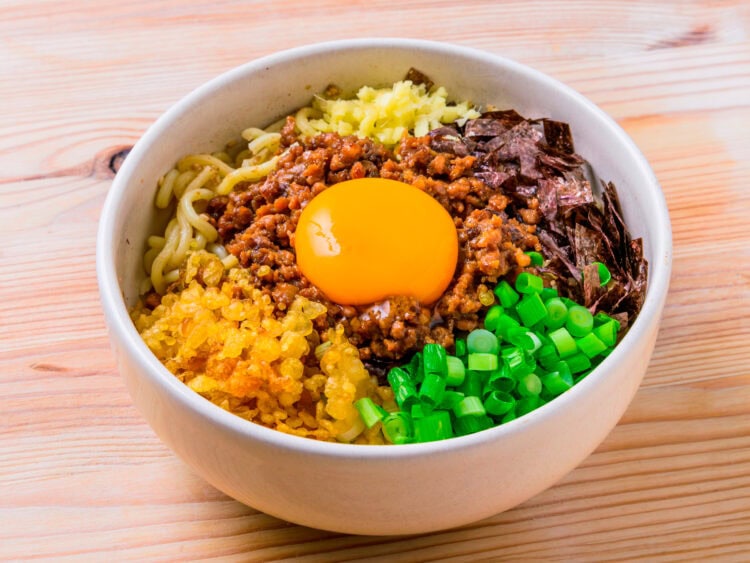An irresistible Taiwan mazesoba recipe, a broth-less ramen you will love
Taiwan Mazesoba, what is it?
Defining a dish is never easy. Here, the best way is by comparison, specifically with abura soba, and I will outline the differences from Taiwan mazesoba (also called mazemen) later in this article.
That said, the concept is in the name: dry ramen. In other words, ramen without the most time-consuming element: the broth.
Be careful, even though the signature component of ramen has been removed, it is replaced by a deeply flavorful mazesoba sauce and toppings that are somewhat unusual for a ramen. The dish has evolved into a pillar of Japanese cuisine in its own right, not just a simplified, express version of ramen.
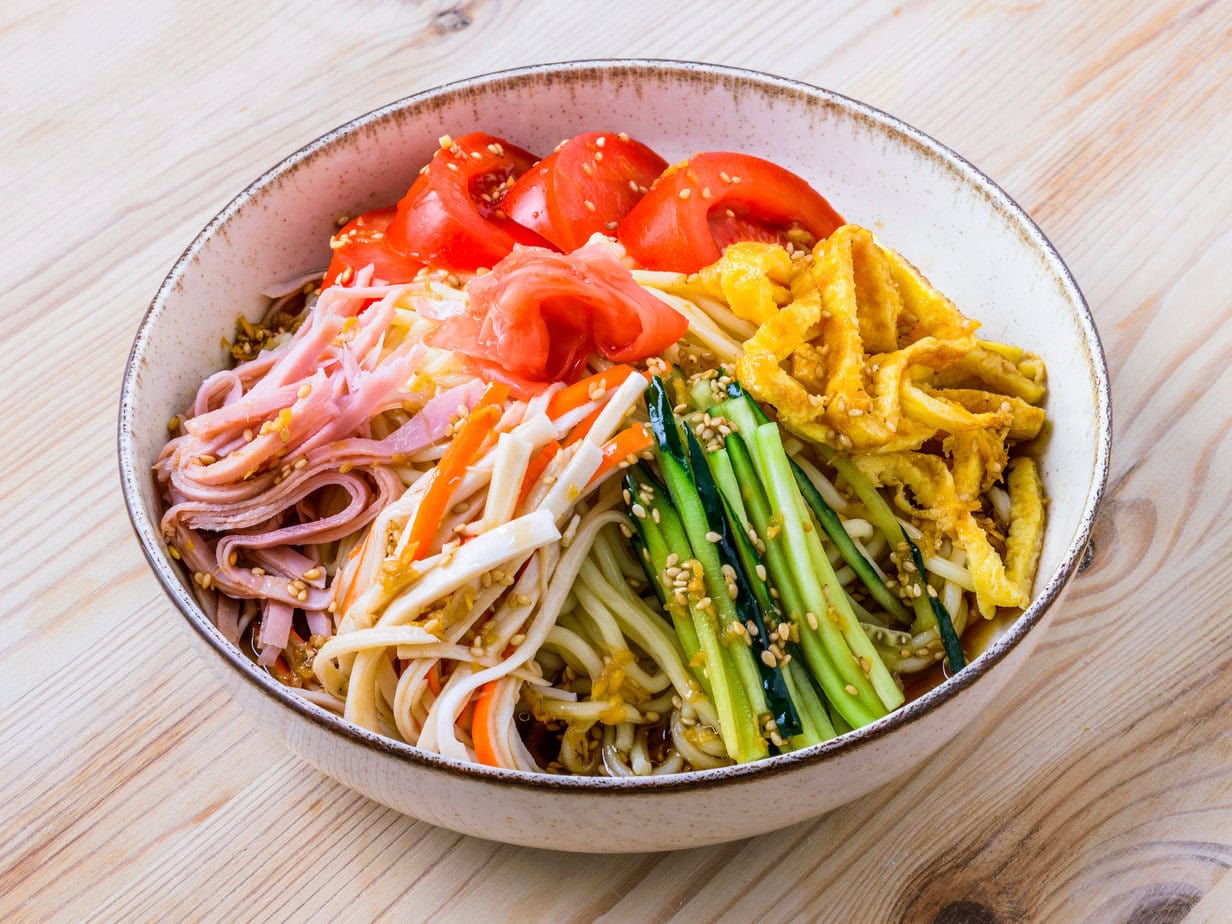
The term “maze” comes from the Japanese verb “mazeru” (混ぜる), meaning to mix, while “soba” refers here to Chinese-style noodles. Although “soba” is often associated with buckwheat noodles, the word can also, perhaps surprisingly, denote wheat-based noodles like those used in yakisoba (stir-fried noodles) and mazesoba.
Thus, despite their names, neither the yakisoba nor mazesoba contains soba, unlike zaru soba.

Origins of Taiwan Mazesoba
Although called “Taiwan mazesoba,” the dish actually originated in Japan. It was created in Nagoya, Aichi Prefecture, where it has become a local specialty. In 2008, the noodle shop Menya Hanabi developed mazesoba. The owner wanted to make Taiwanese ramen, another Nagoya specialty, but could not produce a satisfactory broth.
As he was about to discard it, an employee suggested serving the seasoned minced meat over boiled noodles instead. The chef tried it, refined it, and gave birth to the “Taiwan mazesoba” we know today.
Because the restaurant’s owner is originally from Taiwan, he insisted on including “Taiwan” in the name of the dish.
The difference between Mazesoba and Abura Soba
In a dish called “abura soba,” literally “oil noodles,” boiled noodles and various toppings are arranged over a soy-sauce-based tare poured into the bottom of the bowl. To season the dish properly, you must mix the noodles with the tare before eating.
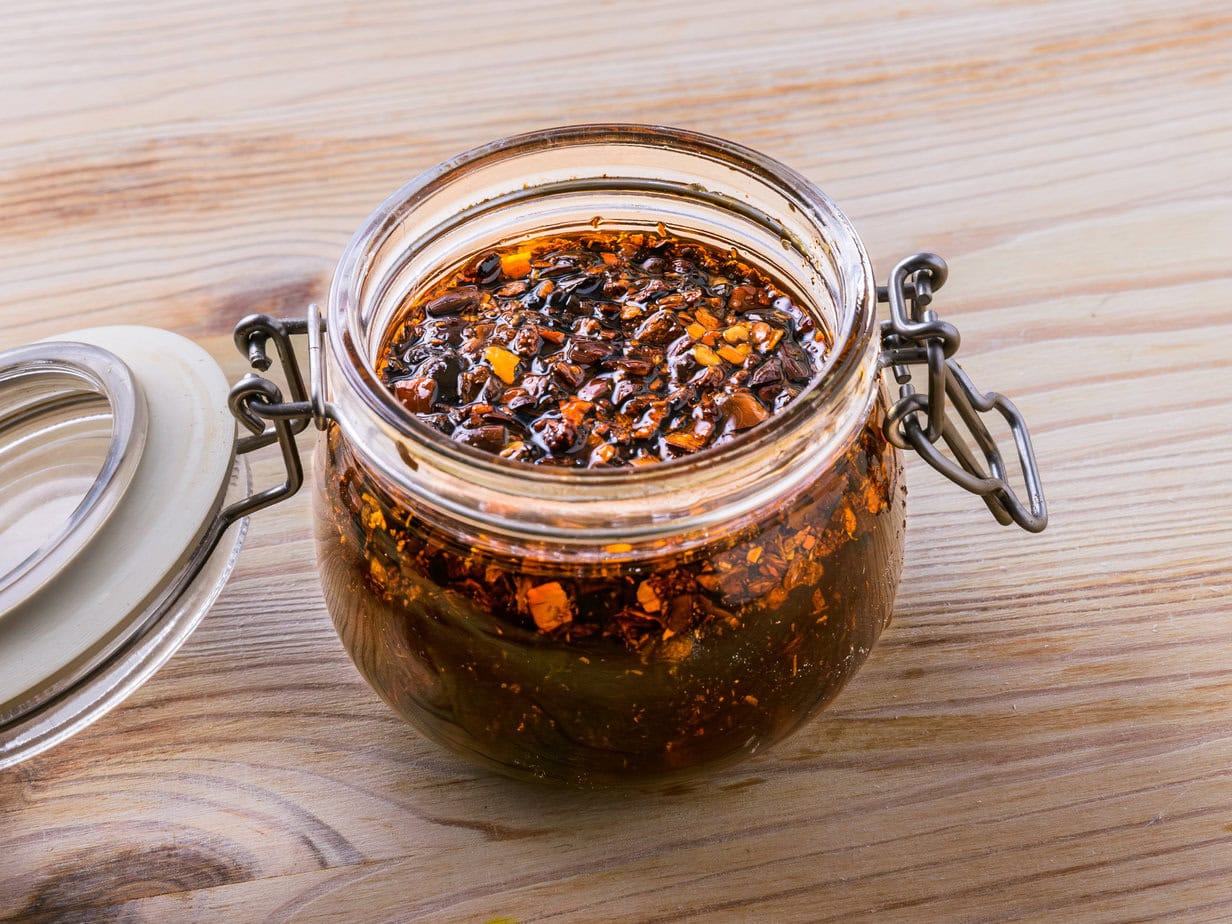
Mix the noodles as you eat, adding rayu chili oil and the accompanying vinegar to taste. Compared with abura soba, mazesoba features bolder toppings, including minced meat seasoned with varying levels of chili, scallions, green onions, and an egg yolk.
Although abura soba and mazesoba are very similar, mazesoba generally comes with extra toppings.
The main ingredients of Taiwan Mazesoba
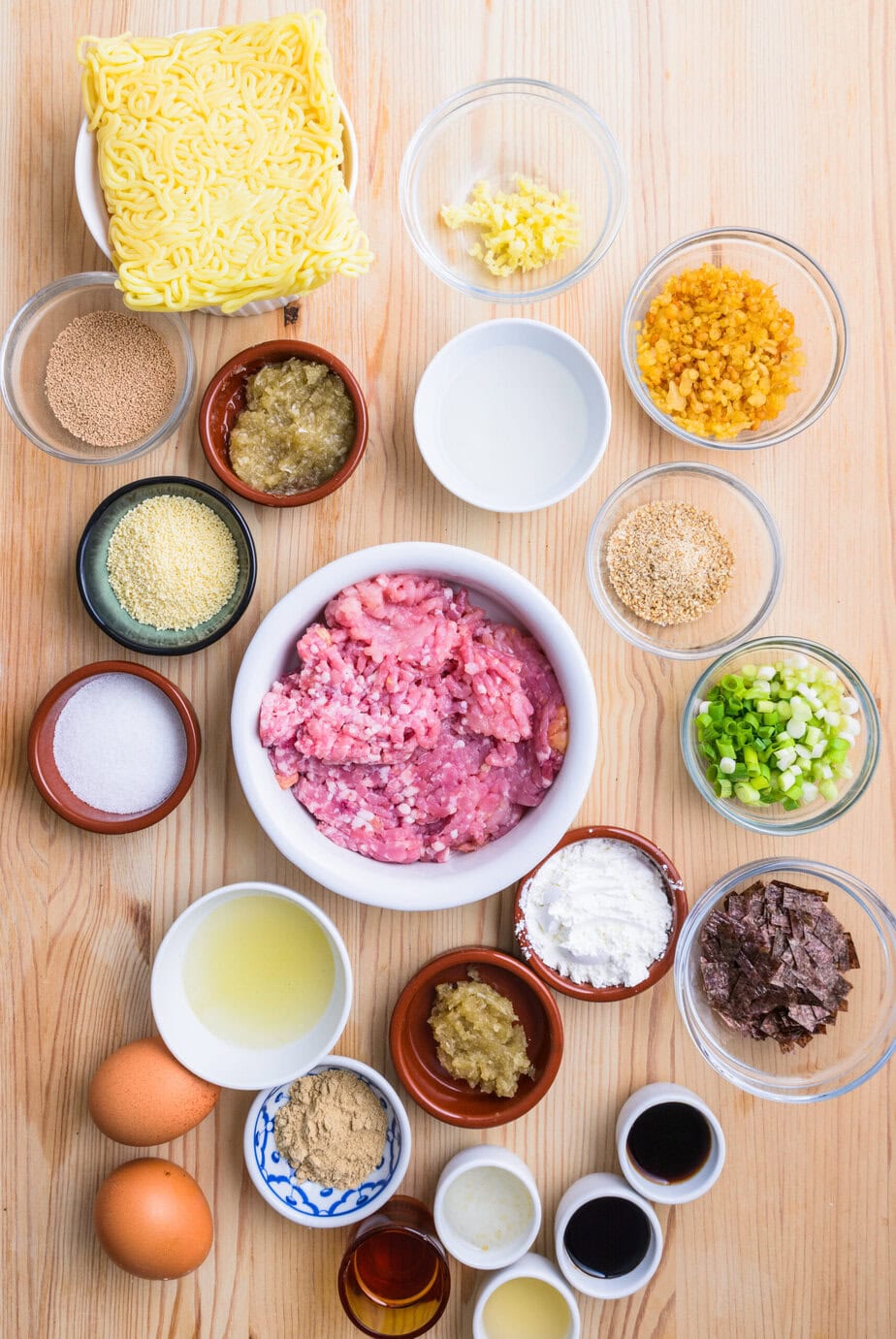
The light and dark soy sauce: provide depth and richness through salty, umami notes.
The mirin: softens the flavor while adding a gentle sweetness that balances the saltiness.
The dashi powder: boosts the sauce’s umami, giving the entire dish a savory, rounded flavor.
The sake: brings a mild acidity and a subtle aroma that enhances the other ingredients.
Sesame oil: adds nutty depth.
The nori: lends an iodized, oceanic note and a hint of crunch when sprinkled over the dish.
Tenkasu: supplies crunch and texture, offsetting the softness of the other components with a slightly salty note.

Authentic Taiwanese Mazesoba (Dry Ramen)
Equipment
- 1 Wok
Ingredients
- 300 g pork ground, about 30% fat (preferably pork belly)
Pork marinade
- 30 ml chicken stock
- 3 tablespoons cornstarch
- 4 cloves garlic minced
- 1 tablespoon sesame oil
- 1 tablespoon sake
- 1 tablespoon light soy sauce
- 1 tablespoon dark soy sauce
- 1 tablespoon mirin
- 1 teaspoon white pepper
Mazesoba sauce
- 4 tablespoons light soy sauce
- 4 tablespoons mirin
- 4 tablespoons water
- 2 teaspoons sugar
- 4 teaspoons chicken bouillon powder
- 4 teaspoons dashi powder
- 2 teaspoons garlic paste
Seasonings
- 4 tablespoons mazesoba sauce
- 2 teaspoons garlic paste
- 2 tablespoons hot water
- 4 tablespoons neutral oil
- 2 tablespoons sesame seeds ground
- 1 teaspoon white pepper
Toppings
- 4 green onions thinly sliced
- 2 sheets nori cut into thin strips
- 2 egg yolk
- 2 tablespoons tenkasu crispy tempura bits
- 1 piece ginger minced (about a 3-cm knob)
- 2 portions ramen noodles
Instructions
- In a small saucepan, combine all of the mazesoba-sauce ingredients.4 tablespoons light soy sauce, 4 tablespoons mirin, 4 tablespoons water, 2 teaspoons sugar, 4 teaspoons chicken bouillon powder, 4 teaspoons dashi powder, 2 teaspoons garlic paste

- Heat over medium until the mixture just begins to simmer, then remove from the heat and set aside.
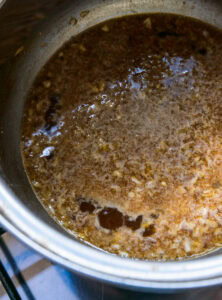
- In a separate bowl, whisk together the seasoning ingredients.4 tablespoons mazesoba sauce, 2 tablespoons hot water, 4 tablespoons neutral oil, 2 tablespoons sesame seeds, 1 teaspoon white pepper, 2 teaspoons garlic paste

- Toss the pork with the marinade and let it rest for 10 minutes.300 g pork, 30 ml chicken stock, 3 tablespoons cornstarch, 4 cloves garlic, 1 tablespoon sesame oil, 1 tablespoon sake, 1 tablespoon light soy sauce, 1 tablespoon dark soy sauce, 1 tablespoon mirin, 1 teaspoon white pepper
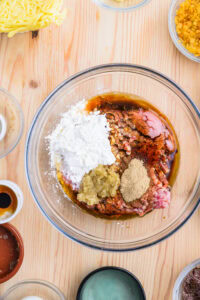
- Heat a thin film of oil in a wok over high heat. Add the pork and leave it untouched for a few minutes so it can brown deeply. Stir, break up the meat, and continue searing until fully cooked. Set aside.
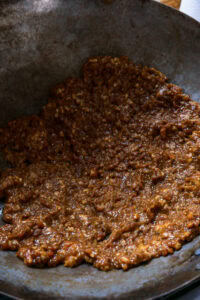
- Cook the noodles in boiling water. Drain, then shake them vigorously in a colander until they become slightly sticky and glossy as excess starch rinses away.2 portions ramen noodles
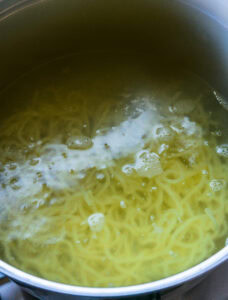
Plating
- Divide the noodles among serving bowls, pour the seasoning mixture over each, and toss well.
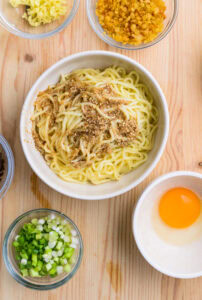
- Arrange nori strips, minced ginger, green onions, and tenkasu around the edge of each bowl.4 green onions, 2 sheets nori, 2 tablespoons tenkasu, 1 piece ginger
- Mound the pork in the center and crown each bowl with an egg yolk.2 egg yolk
